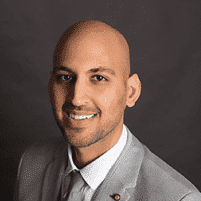
Varicose veins are enlarged, swollen veins that often appear dark blue or purple, which happen when faulty valves in the veins allow blood to pool or flow in the wrong direction. Pregnant women and people who are overweight are more susceptible to varicose veins. Although the veins rarely affect your general health, severe cases of varicose veins may cause them to rupture or become varicose ulcers on the skin.
Adjust Your Lifestyle
Avoid sitting or standing for extended periods of time. Keeping your legs in one position for a long time causes blood to pool in your veins. To maintain good circulation, ensure you change positions often by taking walks or stretching every hour or so. When sitting down elevate your legs from time to time to ease pressure on the blood vessels. You can place them on another chair or a small stool, ensuring the feet are above the height of your heart. Keeping your legs uncrossed can also reduce pressure build-up in the veins. Taking time to elevate your legs while you’re lying on your back is important as it can help ease pressure on the blood vessels.
When dressing, choose loose clothing and low-heeled shoes as tight clothes and high heels exert pressure on the veins, making it difficult for blood to pass. Flat shoes force the calf muscles to work more, which increases blood circulation in the veins. Additionally, incorporate regular exercises into your schedule to improve the muscle tone and circulation of blood. Exercising helps you lose weight, which eases tons of pressure on the legs, minimizing varicose veins in the process.
Professional and Medical Procedures
Wearing compression socks keeps varicose veins in check. Due to their elastic nature, they put therapeutic pressure on the legs. They are tight at the ankles and get loose as you go up the leg and this encourages blood to flow towards the heart. They come in different styles, pressures, and sizes depending on the severity of your problem. If compression socks are too much for you, talk to your doctor about sclerotherapy. This type of treatment causes varicose veins to fade from sight and requires no anesthesia. Surface laser treatment is also available although it’s ideal if the veins are smaller.
Another form of treatment you can consider is endovenous thermal ablation. In this procedure, radio waves are used to focus powerful heat on the veins. The veins get damaged, scarred, shutting and fading from view. This method is ideal for deeper varicose veins. The doctor inserts a catheter and a small probe through which the waves are transmitted into the leg. The healthier veins take up the flow of blood.
Home Remedies
Although they might be less costly, opting to treat varicose veins with home remedies is not always the best way, as they may not compare to medical procedures in terms of effectiveness. Before using home remedies, talk to your doctor about the health risks or possible side effects involved. Moreover, some home remedies may interfere with other medication you’re using. Herbal extracts such as horse chestnut may be effective in treating chronic venous insufficiency, which is very much associated with varicose veins. Apple cider vinegar is also thought to reduce the size of varicose veins though there is little scientific proof of this.




Leave a Reply